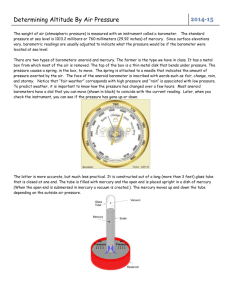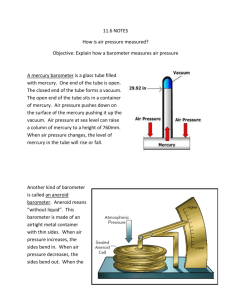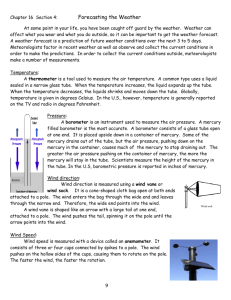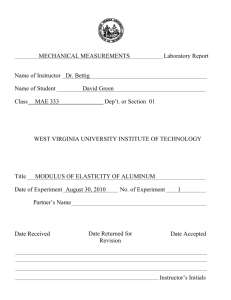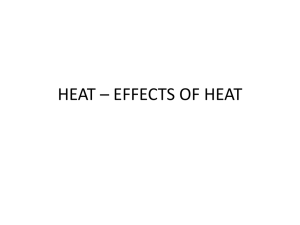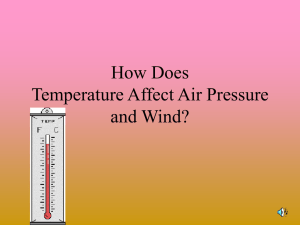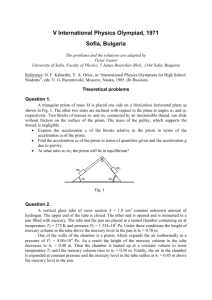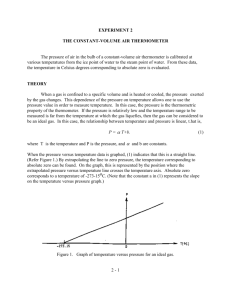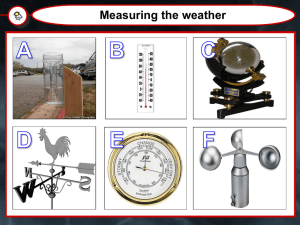Urban Heat Islands – What does the image show?
advertisement
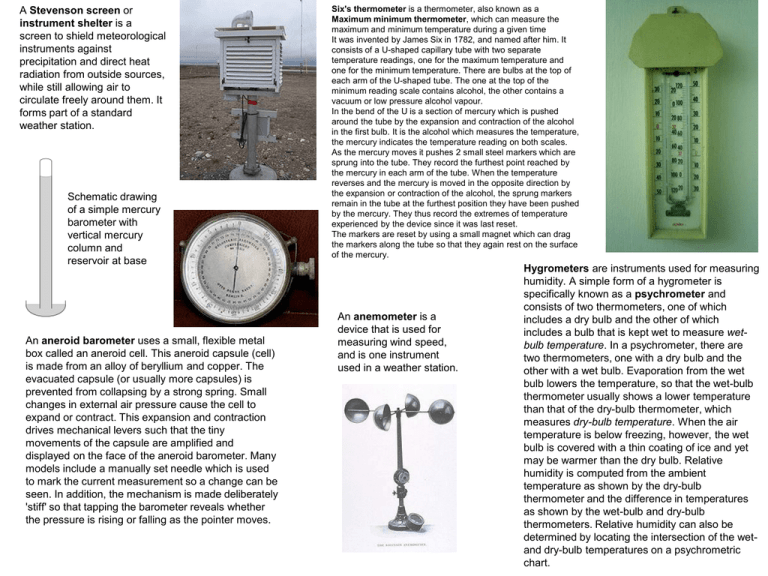
A Stevenson screen or instrument shelter is a screen to shield meteorological instruments against precipitation and direct heat radiation from outside sources, while still allowing air to circulate freely around them. It forms part of a standard weather station. Schematic drawing of a simple mercury barometer with vertical mercury column and reservoir at base An aneroid barometer uses a small, flexible metal box called an aneroid cell. This aneroid capsule (cell) is made from an alloy of beryllium and copper. The evacuated capsule (or usually more capsules) is prevented from collapsing by a strong spring. Small changes in external air pressure cause the cell to expand or contract. This expansion and contraction drives mechanical levers such that the tiny movements of the capsule are amplified and displayed on the face of the aneroid barometer. Many models include a manually set needle which is used to mark the current measurement so a change can be seen. In addition, the mechanism is made deliberately 'stiff' so that tapping the barometer reveals whether the pressure is rising or falling as the pointer moves. Six's thermometer is a thermometer, also known as a Maximum minimum thermometer, which can measure the maximum and minimum temperature during a given time It was invented by James Six in 1782, and named after him. It consists of a U-shaped capillary tube with two separate temperature readings, one for the maximum temperature and one for the minimum temperature. There are bulbs at the top of each arm of the U-shaped tube. The one at the top of the minimum reading scale contains alcohol, the other contains a vacuum or low pressure alcohol vapour. In the bend of the U is a section of mercury which is pushed around the tube by the expansion and contraction of the alcohol in the first bulb. It is the alcohol which measures the temperature, the mercury indicates the temperature reading on both scales. As the mercury moves it pushes 2 small steel markers which are sprung into the tube. They record the furthest point reached by the mercury in each arm of the tube. When the temperature reverses and the mercury is moved in the opposite direction by the expansion or contraction of the alcohol, the sprung markers remain in the tube at the furthest position they have been pushed by the mercury. They thus record the extremes of temperature experienced by the device since it was last reset. The markers are reset by using a small magnet which can drag the markers along the tube so that they again rest on the surface of the mercury. An anemometer is a device that is used for measuring wind speed, and is one instrument used in a weather station. Hygrometers are instruments used for measuring humidity. A simple form of a hygrometer is specifically known as a psychrometer and consists of two thermometers, one of which includes a dry bulb and the other of which includes a bulb that is kept wet to measure wetbulb temperature. In a psychrometer, there are two thermometers, one with a dry bulb and the other with a wet bulb. Evaporation from the wet bulb lowers the temperature, so that the wet-bulb thermometer usually shows a lower temperature than that of the dry-bulb thermometer, which measures dry-bulb temperature. When the air temperature is below freezing, however, the wet bulb is covered with a thin coating of ice and yet may be warmer than the dry bulb. Relative humidity is computed from the ambient temperature as shown by the dry-bulb thermometer and the difference in temperatures as shown by the wet-bulb and dry-bulb thermometers. Relative humidity can also be determined by locating the intersection of the wetand dry-bulb temperatures on a psychrometric chart. Objectives • You should know what a microclimate is • You should be able to explain how urban areas modify their climates for a range of weather characteristics • You should be able to quote examples of places where urban areas have modified their climates. • What is a microclimate? Produce a mind map on all of the ways that urban areas could influence their climates Explain each point, add case studies with detailed information to your map using the Geo Fact sheet and Waugh Describe and explain the patterns opposite. How might this vary? Describe and explain the patterns in the chart Weather characteristic Variation in Urban Area Sunshine duration 5 to 15% less Annual mean temperature 0.5-1.0 °C higher Winter maximum temperatures 1 to 2 °C higher Occurrence of frosts 2 to 3 weeks fewer Relative humidity in winter 2% lower Relative humidity in summer 8 to 10% lower Total precipitation 5 to 10% more Number of rain days 10% more Number of days with snow 14% fewer Cloud cover 5 to 10% more Occurrence of fog in winter 100% more Amount of condensation nuclei 10 times more Objectives – rate yourself out of 10 for each • You should know what a microclimate is • You should be able to explain how urban areas modify their climates for a range of weather characteristics • You should be able to quote examples of places where urban areas have modified their climates.
